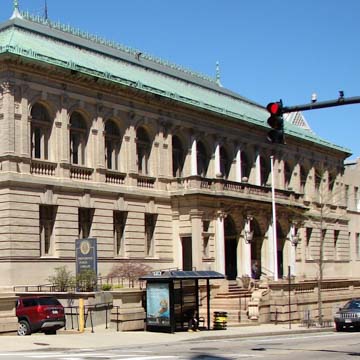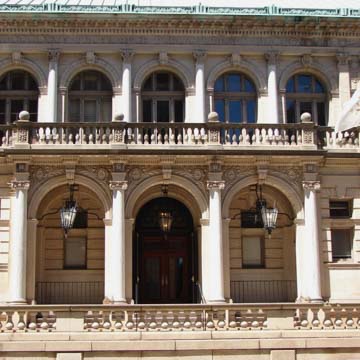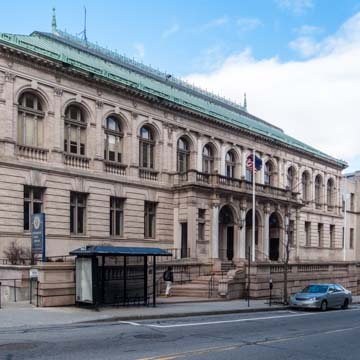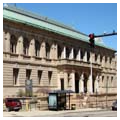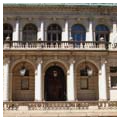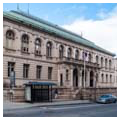It is not the bland and conspicuous 1953 addition at the corner of Washington and Empire streets that deserves attention here, but the original Renaissance Revival building behind it on Washington, restored in 1985–1988. Whereas the modernist monumentality of the addition makes the architectural image of the library easily accessible, the renovation of the approach into the original building gives precedence to the ceremony and aura of veneration which the early twentieth century considered appropriate for entry to a major cultural institution.
The example of the Boston Public Library was clearly in the architects' minds, although they saw it dressed not in its severe fifteenth-century Florentine garb, but in finery freely adapted from Jacopo Sansovino's sixteenth-century library in Venice. This is among the handsome translations of the much-imitated Boston building. Boston's granite walls have been translated into yellow brick with stone trim. The extravagant wrought-iron bracketing of McKim, Mead and White's famous clusters of lamps is drastically reduced, spikey and intricate, in keeping with scintillant delicacy and elaboration typical of Willson's ornament. These qualities are evident particularly in the treatment of the roof.
The main stair hall to what is now administrative offices is especially handsome. Columns in polychrome scagliola and brass sconces provide the approach to an upstairs entrance hall, columned and round-arched in the same quattrocento Florentine manner as that at the head of the grand staircase in Boston. Although the semirestored interiors of the original main reading rooms are spatially cramped and somewhat overwrought in detail, Willson, working closely with Librarian William E. Foster, effected a more convenient relationship between reading room and stacks than McKim managed in Boston. When the interior was completely revamped in the 1980s, however, the original relationship of interior arrangements was eradicated.

